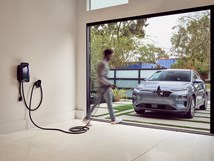U.S. May Rework Rules that Hamper Driverless-Car Development
U.S. regulators are seeking input from developers of autonomous cars on how to revise vehicle safety standards that allow cars designed to be driven by computers rather than people.
#regulations
U.S. regulators are seeking input from developers of autonomous cars on how to revise vehicles safety standards that allow cars designed to be driven by computers rather than people.
The National Highway Traffic Safety Administration says it wants industry help to identify “any unnecessary regulatory barriers” to robotic vehicles, including such cars built without a steering wheel, accelerator or brake pedal. Those human-oriented features are mandated by federal law but won’t be necessary for cars that can drive themselves in all conditions that a human could handle.
Dozens of other laws also would become redundant for self-driving cars. Fully autonomous vehicles, for example, don’t need windshield wipers. But independent safety groups fret that federal regulators must ensure that robotic cars have their own set of operating standards to guarantee their safety if a malfunction occurs.
RELATED CONTENT
-
Toyota Employees to Aid Michigan V2X Research
Toyota Motor Corp. is encouraging employees at its research and development center near Ann Arbor, Mich., to participate in an on-going program there to test connected vehicle technologies.
-
Report Predicts Limited Impact of Autonomous Tech on Professional Drivers
A new study says autonomous vehicles will displace some taxi drivers but have only a modest impact on the number of truck driver jobs over the next 10 years.
-
Startup Readies Solar-Powered EV
Germany’s Sono Motors GmbH says it has received 5,000 orders for its upcoming Sion electric car, which can be partially recharged by it attached solar panels.








